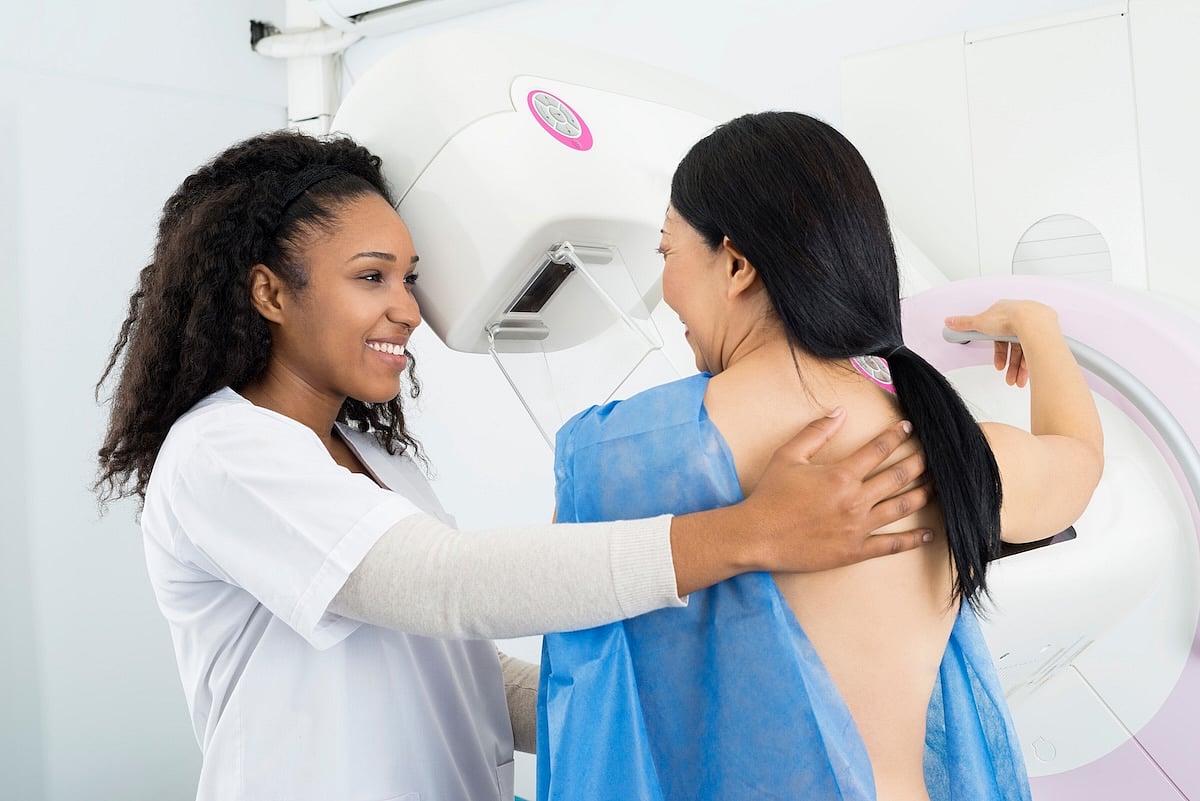Get Healthy!

- Dennis Thompson
- Posted May 22, 2025
Additional Breast Cancer Scans Can Triple Detection In Women With Dense Breasts
Louise Duffield, 60, was relieved to receive a normal mammogram result in 2023, but agreed to undergo an additional MRI scan recommended as part of a clinical trial.
Her mammogram showed she had very dense breasts, which can sometimes prevent detection of breast cancer. The clinical trial was intended to test whether extra scans would help.
For Duffield, it certainly did. The MRI found a small lump deep inside one of her breasts.
“When they rang to say they’d found something, it was a big shock,” Duffield, a grandmother of four from Ely, U.K., said in a news release. “You start thinking all sorts of things but, in the end, I just thought, at least if they’ve found something, they’ve found it early.”
Women with dense breasts would indeed benefit from additional scans on top of their standard mammograms, the clinical trial has now concluded.
Extra imaging tests could more than triple breast cancer detection among women with dense breasts, researchers reported May 21 in the journal The Lancet.
These additional scans — which use injected contrast dyes to highlight tumors — detected 85 cancers among more than 9,000 U.K. women with dense breasts who’d had a clean mammogram result, including Duffield, study results show.
“Getting a cancer diagnosis early makes a huge difference for patients in terms of their treatment and outlook,” lead researcher Dr. Fiona Gilbert, a professor of radiology at the University of Cambridge, said in a news release.
National screening programs should consider including these extra scans “so we can make sure more cancers are diagnosed early, giving many more women a much better chance of survival,” Gilbert added.
About 10% of 50- to 70-year-old women have very dense breasts with low levels of fatty tissue. These women are up to four times more likely to develop breast cancer compared to women with low breast density, researchers said in background notes.
But current breast cancer screening guidelines in both the U.S. and U.K. don’t consider breast density, instead recommending standard mammograms for all.
Reporting of breast density for women is mandated in the U.S., but there’s no consensus regarding how women with dense breasts should be screened, researchers said.
For this clinical trial, researchers recruited nearly 9,400 women with dense breasts who’d gotten a clean mammogram between October 2019 and March 2024.
Three-fourths of them were randomly assigned to one of three additional screening tests — CEM (contrast enhanced mammography), AB-MRI (abbreviated magnetic resonance imaging) or ABUS (automated whole breast ultrasound). The remaining participants did not get an extra scan.
For each 1,000 women scanned:
19 cancers were detected with CEM, which uses an injected contrast agent to improve the visibility of tumors.
17 cancers were detected with AB-MRI, which also uses a contrast dye to highlight abnormalities.
4 cancers were detected by ABUS, which uses sound waves to produce images.
Mammograms already detect about 8 cancers for every 1,000 women with dense breasts, researchers said. That means these extra scans could more than triple early breast cancer detection in these women.
All told, CEM and AB-MRI were three times more effective than ABUS, researchers found.
The research team concluded that CEM and AB-MRI should be considered as an additional screening measure for women with dense breasts.
“This study shows that making blood vessels more visible during mammograms could make it much easier for doctors to spot signs of cancer in women with dense breasts,” senior researcher Stephen Duffy, an emeritus professor with Queen Mary University in London, said in a news release.
“More research is needed to fully understand the effectiveness of these techniques, but these results are encouraging,” he said.
Duffield’s tumor would have been tough for her to find through self-examination, given its location within her breast. Under U.K. guidelines, it would have been at least three years before she would have gotten another mammogram.
Soon after her MRI, she underwent a biopsy that confirmed she had very early-stage breast cancer.
Six weeks later, she had surgery to remove the tumor; during that wait, the lump had already grown larger than it appeared on the scans.
Following a short course of radiation therapy, Duffield is now cancer-free, doctors said. They’ll continue to monitor her for several years.
“It’s been a stressful time and it’s a huge relief to have it gone,” she said.
“I feel very lucky, it almost doesn’t feel like I’ve really had cancer,” Duffield added. “Without this research I could have had a very different experience.”
She said the experience has highlighted for her the importance of screening.
“If I hadn’t had the mammogram, I wouldn’t have been invited to the trial," Duffield concluded. "Getting treated was so quick because they found the cancer early.”
More information
The University of Texas MD Anderson Cancer Center has more on contrast-enhanced mammography, while Moffitt Cancer Center has more on abbreviated magnetic resonance imaging.
SOURCES: University of Cambridge, news release, May 21, 2025; The Lancet, news release, May 21, 2025
